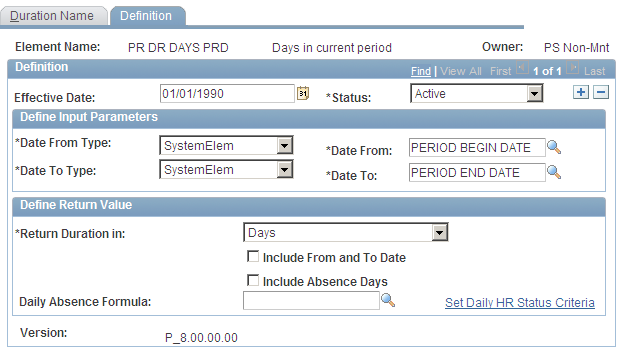Duration Definition Example
Post on: 16 Март, 2015 No Comment

What it is:
Duration is a measure of a bond ‘s sensitivity to interest rate changes. The higher the bond’s duration, the greater its sensitivity to the change (also know as volatility) and vice versa.
How it works/Example:
There is more than one way to calculate duration, depending on one’s compounding assumptions, but the Macaulay duration (named after Frederick Macaulay, an economist who developed the concept in 1938) is the most common. The formula is:
where:
t = period in which the coupon is received
C = periodic (usually semiannual) coupon payment
y = the periodic yield to maturity or required yield
n = number periods
M = maturity value (in $)
The formula is complicated, but what it boils down to is: Duration = Present value of a bond’s cash flows, weighted by length of time to receipt and divided by the bond’s current market value. For example, let’s calculate the duration of a three-year, $1,000 Company XYZ bond with a semiannual 10% coupon.
Notice in the table above that we first weighted the cash flows by the periods in which the occurred and then calculated the present value of each of these weighted cash flows (also, a measure of 5% is used instead of 10% because payments are semiannual).
To calculate the Macaulay duration, we then divide the sum of the present values of these cash flows by the current bond price (which we are assuming is $1,000):
Company XYZ Macaulay duration = $5,329.48 / $1,000 = 5.33
As mentioned earlier, duration can help investors understand how sensitive a bond is to changes in prevailing interest rates. By multiplying a bond’s duration by the change, the investor can estimate the percentage price change for the bond. For example, consider the Company XYZ bonds with a duration of 5.53 years. If for whatever reason market yields increased by 20 basis points (0.20%), the approximate percentage change in the XYZ bond’s price would be:
-5.53 x .002 = -0.01106 or -1.106%
Note that this is an approximation. The formula assumes a linear relationship between bond prices and yields even though the relationship is actually convex. Thus, the formula is less reliable when there is a large change in yield.
In general, six things affect a bond’s duration:
Bond’s Price: Note that if the bond in the above example were trading at $900 today, then the duration would be $5,329.48 / $900 = 5.92. If the bond were trading at $1,200 today, then the duration would be $5,329.48 / $1,200 = 4.44.
Coupon: The higher a bond’s coupon, the more income it produces early on and thus the shorter its duration. The lower the coupon, the longer the duration (and volatility). Zero-coupon bonds, which have only one cash flow. have durations equal to their maturities .
Maturity: The longer a bond’s maturity, the greater its duration (and volatility). Duration changes every time a bond makes a coupon payment. Over time, it shortens as the bond nears maturity.
Yield to Maturity: The higher a bond’s yield to maturity, the shorter its duration because the present value of the distant cash flows (which have the heaviest weighting) become overshadowed by the value of the nearer payments.
Sinking Fund: The presence of a sinking fund lowers a bond’s duration because the extra cash flows in the early years are greater than those of a bond without a sinking fund.
Call Provision : Bonds with call provisions also have shorter durations because the principal is repaid earlier than a similar non-callable bond.
Why it Matters:
Understanding the duration formula is not nearly as important as understanding that duration is a measure of risk because it has a direct relationship with price volatility. The greater duration of the bond. the greater its percentage price volatility.
By providing a way to estimate the effect of certain market changes on a bond’s price, duration the investor can choose investments that will better meet his future cash needs. Duration also helps income investors who want to take on minimal interest rate risk (that is, they believe interest rates might fall) understand why they should consider bonds with high coupon payments and shorter maturities .














